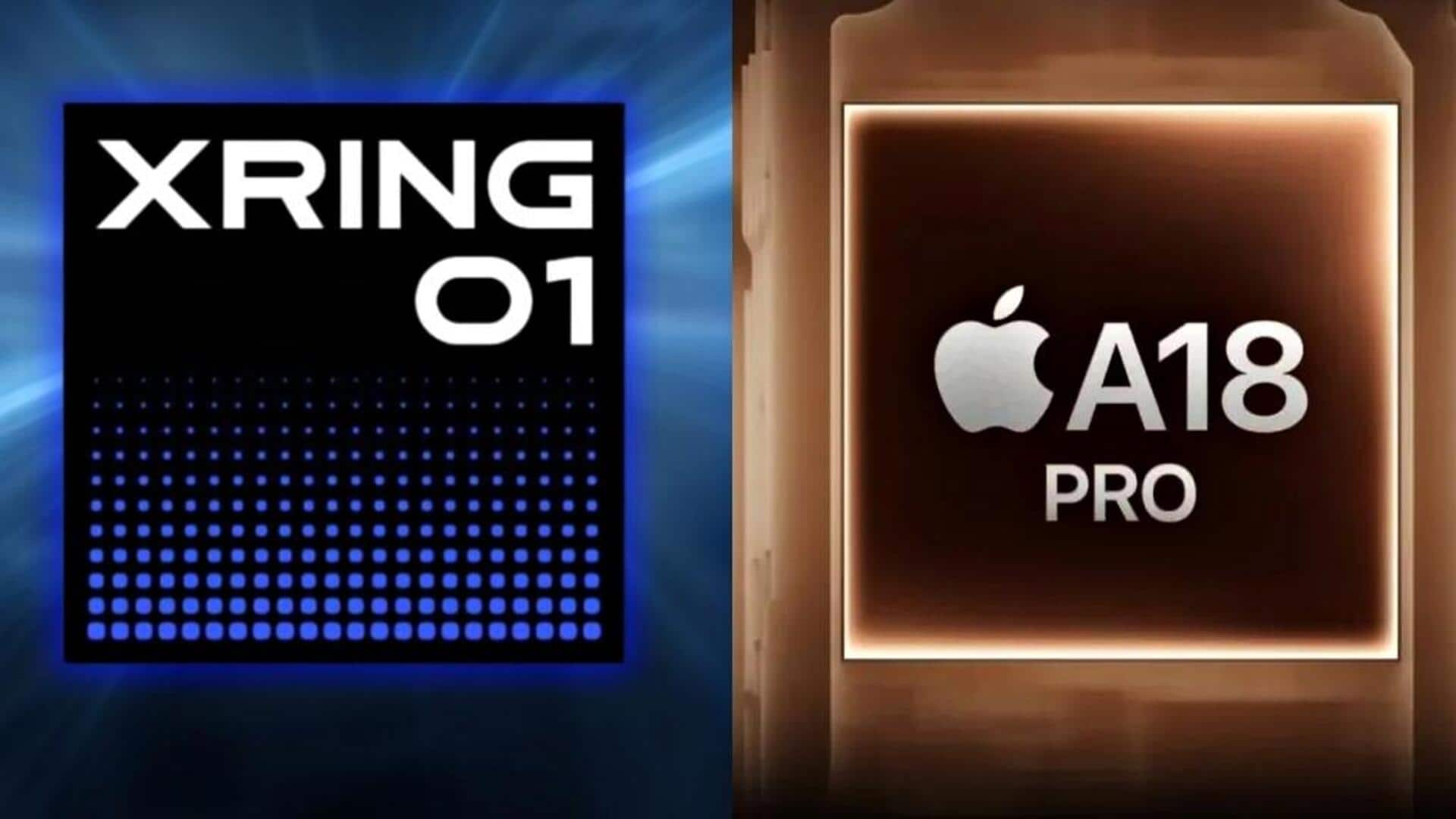
Xiaomi's new 3mm mobile chip matches Apple A18 Pro's performance
What's the story
Xiaomi has officially joined the high-end SoC race with the launch of its first self-developed chipset, the XRING O1. Built on TSMC's second-generation 3nm process, the chip packs 19 billion transistors and powers the newly launched Xiaomi 15S Pro as well as Xiaomi Pad 7 Ultra. This new chip marks a major shift for Xiaomi, which previously relied on Qualcomm and MediaTek for mobile processors.
Benchmarks claims
How it performed against Apple's flagship chip
Xiaomi says the chip has achieved over 3 million points on AnTuTu. The company has shared benchmarks showing XRING O1 on par with Apple's A18 Pro in single and multi-core tests. Xiaomi CEO Lei Jun said that while the company doesn't expect to surpass Apple immediately, the chip already outperforms expectations in light to moderate tasks. He added that its GPU uses 35% less power than Apple's flagship chip and features dynamic performance tuning with advanced cooling for sustained performance.
Chip details
A unique self-developed design
Jun disclosed that the company invested over 13.5 billion yuan ($1.87 billion) and four years to develop the chip. After its launch, a teardown by tech blogger Geekerwan confirmed that the XRING O1 is truly a self-developed design. The chip has a unique internal layout with a small Xiaomi logo etched into the corner of its metal layer, confirming it isn't a rebranded version of Apple's A18 Pro, Qualcomm's Snapdragon 8 Elite, or MediaTek's Dimensity 9400.
Technical specifications
A closer look at the XRING O1's architecture
The XRING O1 packs a 10-core CPU in a quad-cluster configuration. It has two Cortex-X925 ultra-large cores at 3.9GHz, four Cortex-A725 performance cores at 3.4GHz, two Cortex-A725 efficiency cores at 1.9GHz, and two Cortex-A520 ultra-efficiency cores at 1.8GHz. The chip also packs a 16-core Immortalis-G925 GPU and a 6-core NPU offering up to 44 TOPS of AI computing power. It also supports LPDDR5T RAM, UFS 4.1 storage, Wi-Fi 7, and USB 3.2 (Gen 2).
Road ahead
Xiaomi's plans with XRING O1
Xiaomi plans to invest a whopping 50 billion yuan ($6.9 billion) in its chip roadmap over the next decade. The company will deepen its roots in the semiconductor space, using chips as the core components for future products across smartphones, tablets, wearables, IoT devices, and electric vehicles (EVs). However, even with this major development, Xiaomi doesn't intend to completely replace third-party SoC suppliers like MediaTek and Qualcomm in its mainstream and flagship lineups.